Why Diamonds Are a Girl’s Best Friend!
In our first live panel, five inspiring women discuss how diamond mining is leading the way for female empowerment in Africa and throughout the world.
What happens when five inspiring women, each at the top of their careers and passionately committed to gender equality, get together to talk about the future of the diamond industry?
Melanie Grant from the Economist’s 1843 magazine hosted a live debate, “Diamonds: The Future is Female”, with four guests: model and philanthropist Noëlla Coursaris Musunka, founder and CEO of the charity Malaika; Naseem Lahri, MD of Lucara Diamond Botswana; the fine jewelry designer Satta Matturi and Pat Dambe, Vice President of Corporate Affairs and Government Relations, De Beers Group.
The enlightening conversation turns from the impact of diamond mining around the world to how an increasingly strong representation of women in the workforce is helping to build and positively impact entire communities.
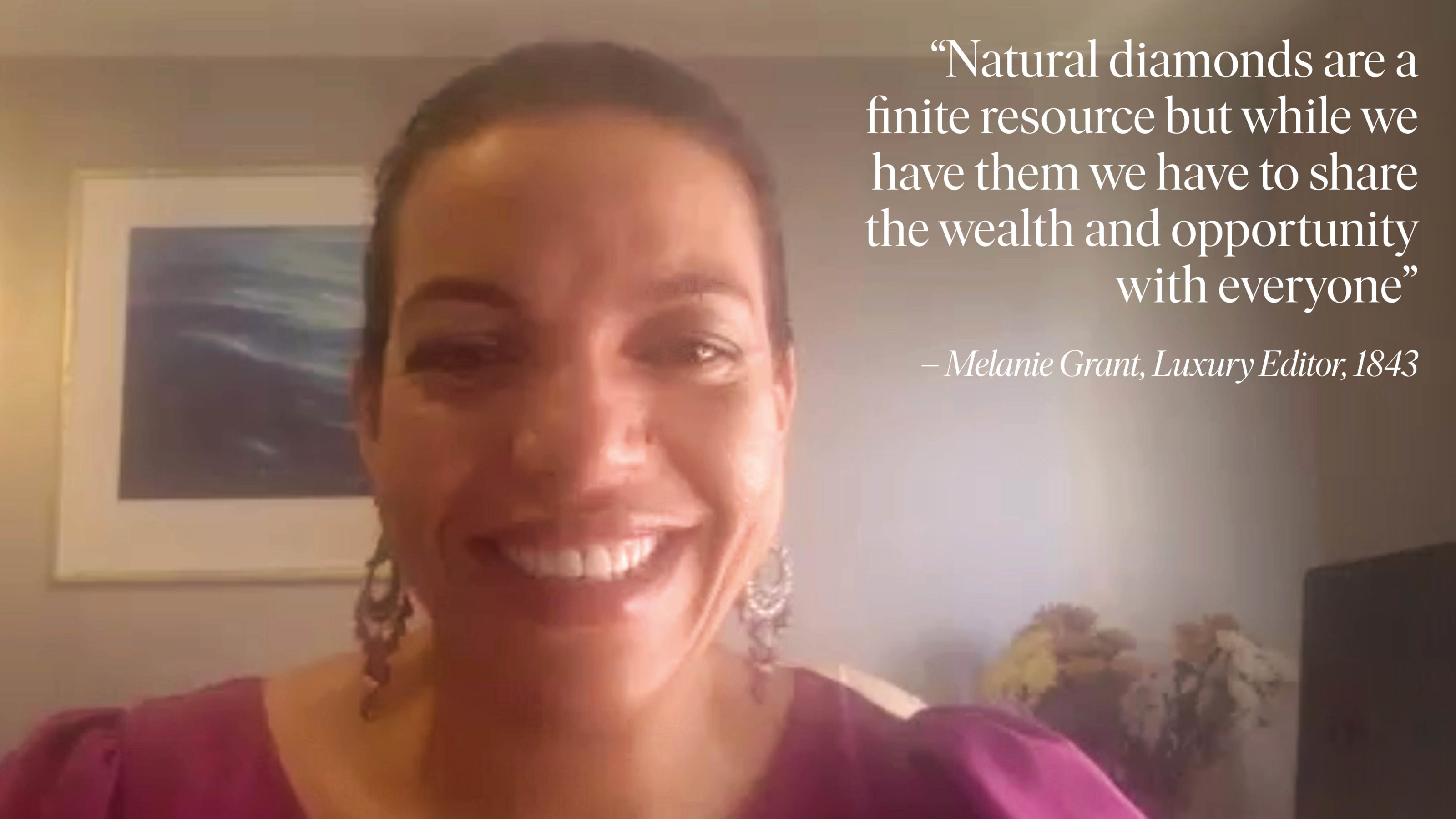
Melanie Grant begins by putting it to the panel that a discussion between women who have already achieved so much is itself a good sign, but asks the question that sparks the debate: whether there really has been significant progress in both diamond mining and across the jewelry industry as a whole?
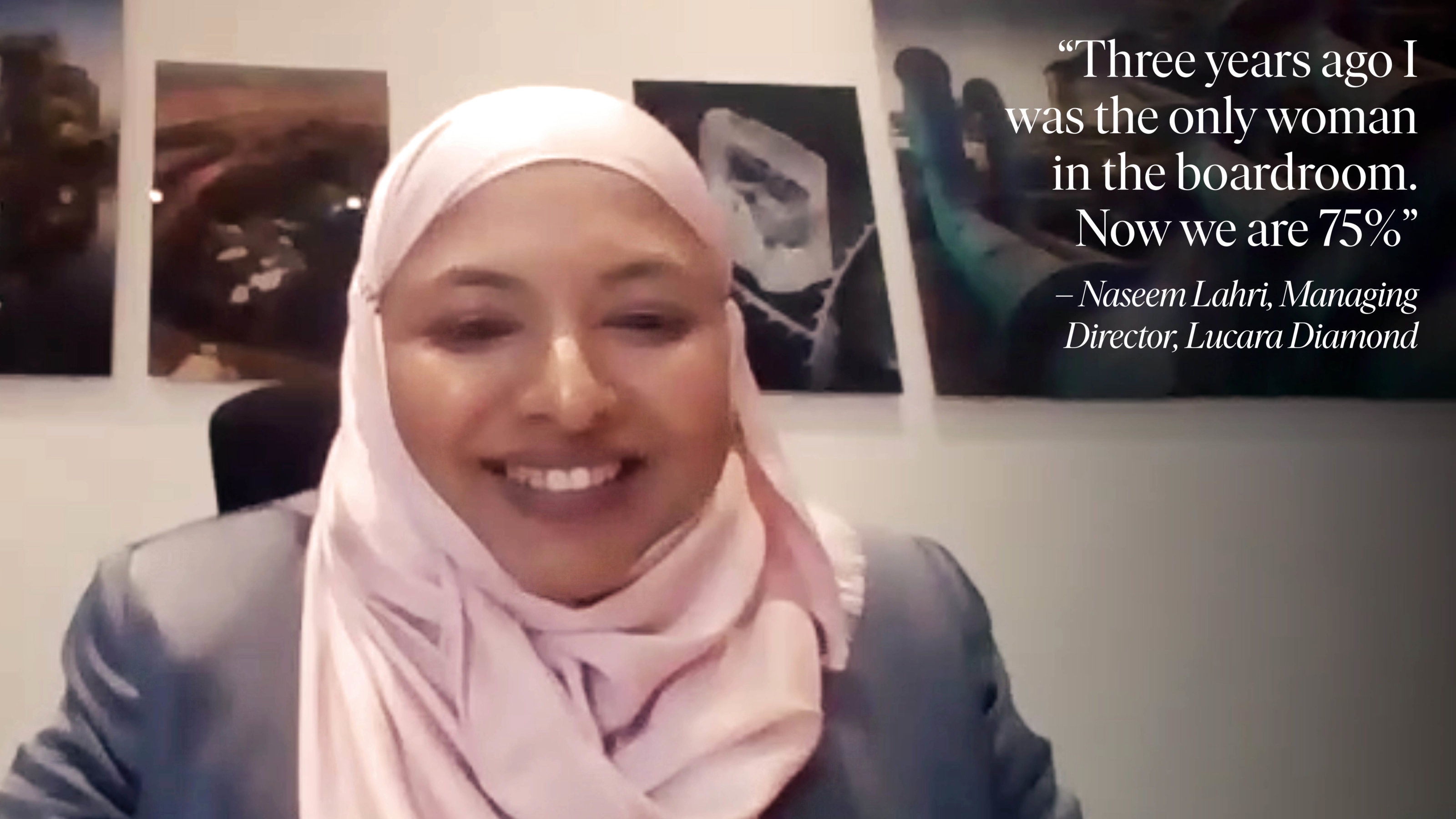
Naseem Lahri, who in 2013 became the first woman to run a diamond mining company in Botswana, says: “Three years ago I was the only woman in the boardroom, now we represent 75 per cent. Things are evolving very quickly, and more people can see we are gender diverse and inclusive. Women are coming to the forefront […] women in leadership is good for business. We are the future of mining.”
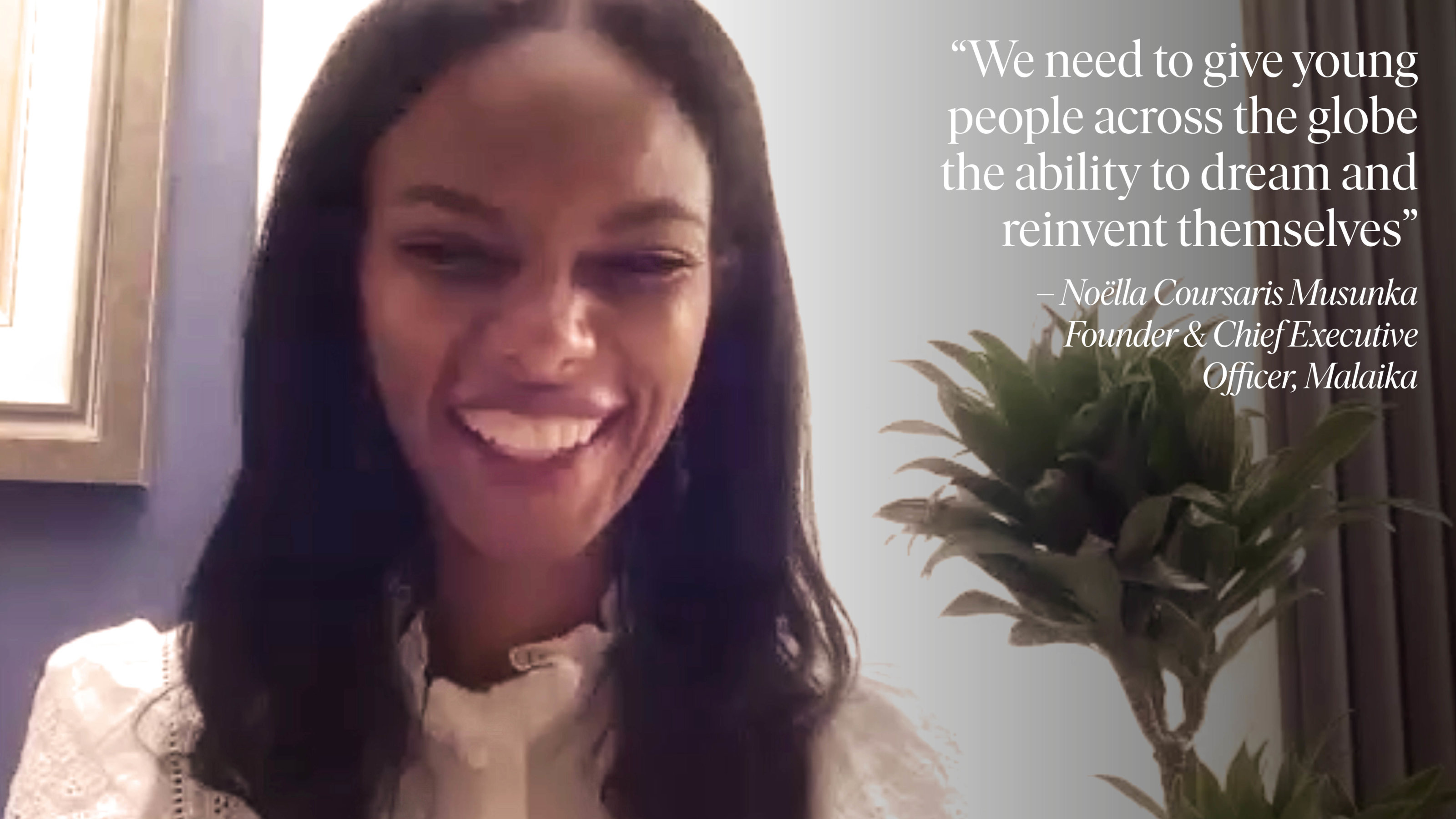
Malaika provides free schooling for girls in the Democratic Republic of Congo. “Lack of education is a big issue across Africa, and it is a problem that disproportionately affects girls,” says Noëlla. “Responsible and ethical mining can help give women access to both healthcare and education. With Malaika we have seen how education can transform a village. We have to teach girls that they can do any job they want to do and give young people across the globe the ability to dream and reinvent themselves.”
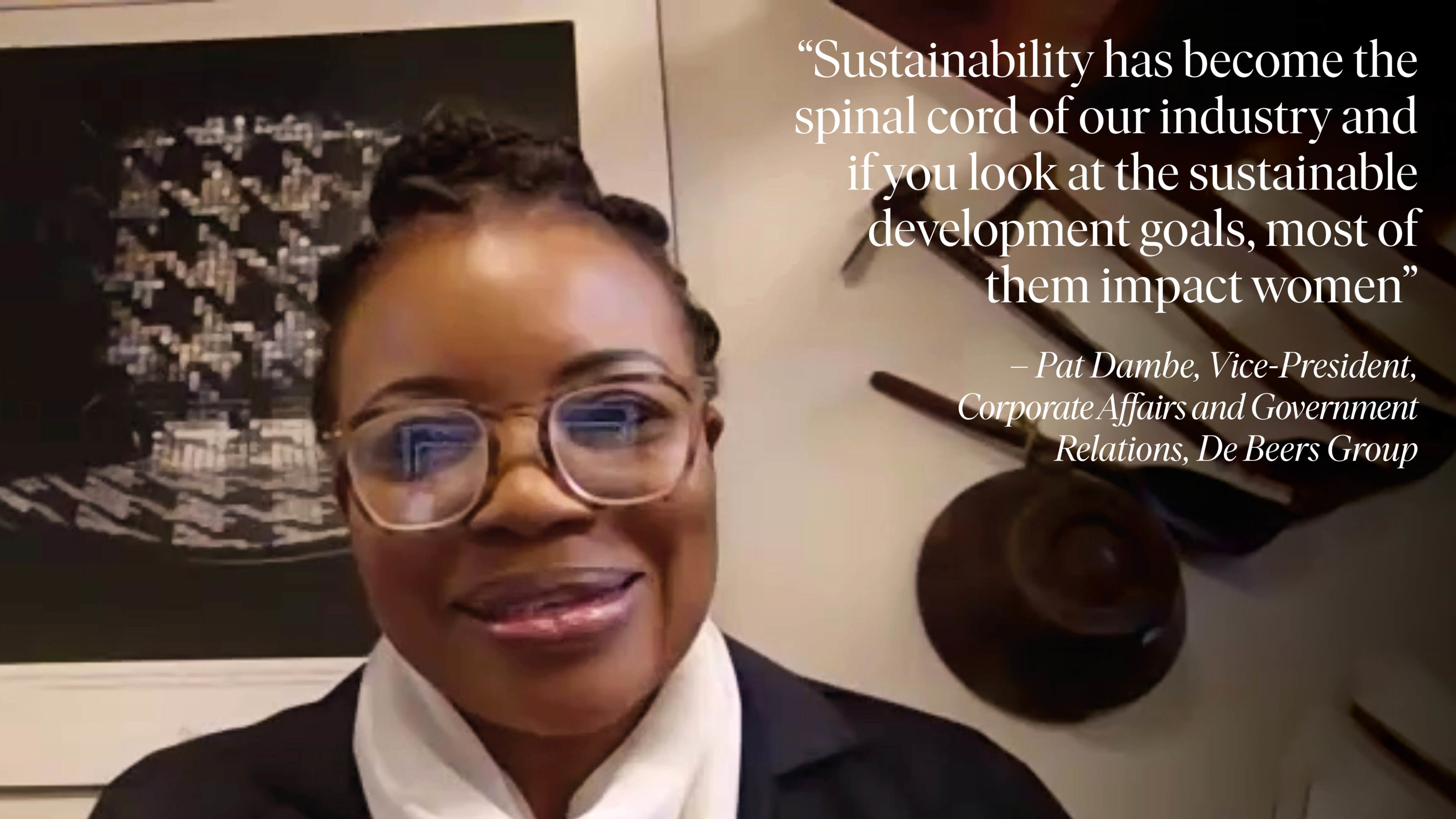
Pat Dambe, speaking about the diamond mining industry in Botswana, has seen many success stories for women and girls given career opportunities they otherwise may not have had. “In my world, I have seen young girls start in the industry and come a long way. ” De Beers Group has supported over 1,000 enterprises through its Tokafala and Zimele enterprise development programs. Around 40 per cent of the businesses involved are female owned.
Pat also explains that diamonds are making significant change in the communities where they are coming from. “A lot of millennials assume diamonds are associated with conflict or environmental issues. That is not the case. Every single Motswana has the benefit of free education and the passport to the best medical care. That’s what diamonds have done.”
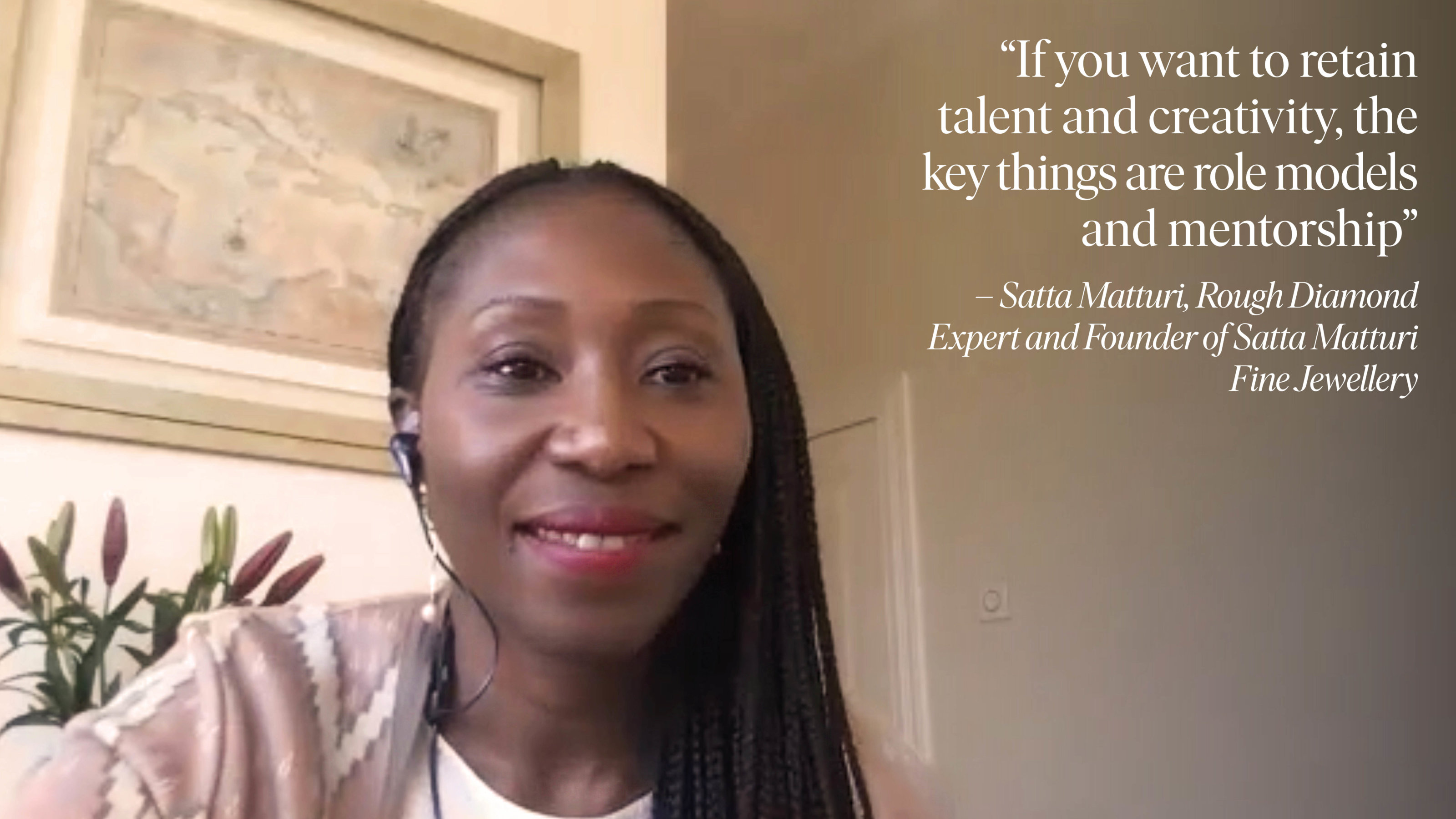
Satta Matturi, whose designs are inspired by Africa and her “passion for diamonds”, said it is important that young girls have women to look up to in the industry. “Role models and mentorship is crucial to success and we need to see more of it.” Satta adds that before, the diamond and jewelry industry has always been patriarchal, and although a new wave of change is helping women to rise “there’s definitely a lack of black female role models out there. As an industry, we need to get together, identify the women’s success stories and tell everyone about them.”
Gender imbalances in any industry are, according to Pat Dambe, a result of “a total misunderstanding of the capabilities of a woman”. Thankfully now, she adds, “a lot of companies have more women sitting around the table… we need both men and women.”
As well as simply readdressing the gender balance, Lahri suggests that women might be better suited to the challenges of the diamond industry than men. “Women have the most amazing qualities and one of them is being adaptable,” she said. “We love change and we are tenacious. We multi-task and it’s inherent in us. We are decisive because we are not afraid of asking a question. I actually think mining was made for women. For me mining is key for women because of the way we are geared. It’s in our DNA.”
Melanie Grant sums up by saying we all need to “encourage women and girls to consider careers that they probably aren’t even aware of”. She concludes with some powerful and thought-provoking words: “Natural diamonds are a finite resource, but while we have them we need to share the wealth and opportunity with everyone.”
